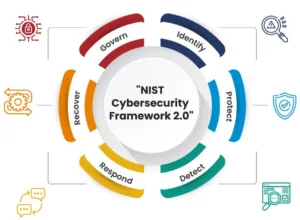
Table of Contents
Introduction
In today’s interconnected digital landscape, where cyber threats are ever-evolving and sophisticated, organizations must prioritize cybersecurity to safeguard their assets and maintain the trust of stakeholders. The concept of Return on Security Investment (ROSI) plays a crucial role in evaluating the effectiveness of cybersecurity measures and ensuring that resources are allocated wisely.
In this blog post, we will delve into the significance of ROSI, its practical implications, and provide a step-by-step guide on calculating this crucial metric.
Understanding Return on Security Investment (ROSI)
Return on Security Investment is a metric used to assess the financial benefits derived from security investments in comparison to the costs incurred.
Essentially, it measures how effectively an organization’s cybersecurity measures contribute to reducing the overall risk and potential financial losses associated with security incidents.
Return on Security Investment (ROSI) Formula

Where:
– Financial Benefits refer to the monetary gains resulting from the implementation of security measures, such as the reduction in the number of security incidents or the mitigation of potential financial losses.
– Cost of Security Investment includes the expenses associated with implementing and maintaining cybersecurity measures, including software, training, personnel, and other relevant costs.
Practical Steps to Calculate ROSI
Step 1: Identify Financial Benefits
To calculate ROSI, the first step is to identify the financial benefits associated with the security investment. These benefits may include:
a. Reduction in Security Incidents: Determine the decrease in the number of security incidents, such as data breaches or malware infections, after implementing security measures.
b. Avoidance of Financial Losses: Quantify the potential financial losses that were avoided due to the prevention or mitigation of security incidents.
c. Enhanced Operational Efficiency: Consider improvements in operational efficiency resulting from a more secure environment, which can lead to cost savings.
Step 2: Calculate Cost of Security Investment
Next, calculate the total cost of the security investment. This should include:
a. Security Software and Tools: The cost of purchasing and maintaining security software and tools.
b. Training and Awareness Programs: Expenses related to training employees on cybersecurity best practices and conducting awareness programs.
c. Personnel Costs: Include the salaries and benefits of cybersecurity personnel.
d. Infrastructure Costs: Consider any additional infrastructure or hardware investments made to enhance security.
Step 3: Apply the Formula
Once you have identified the financial benefits and calculated the cost of security investment, apply the ROSI formula:

Step 4: Interpretation
A positive ROSI indicates that the financial benefits outweigh the costs, signifying a successful security investment. Conversely, a negative ROSI suggests that the costs exceed the financial benefits, prompting a reevaluation of the cybersecurity strategy.
Practical Insights into Maximizing ROSI
1. Align Security Investments with Business Objectives
To maximize ROSI, it is crucial to align security investments with the organization’s overall business objectives. Understanding the specific risks and priorities of the business allows for targeted investments that yield tangible benefits.
2. Conduct Risk Assessments Regularly
Regular risk assessments help identify evolving threats and vulnerabilities. By staying informed about potential risks, organizations can make informed decisions about where to allocate resources for maximum impact.
3. Invest in Employee Training and Awareness
Human error remains a significant factor in security incidents. Investing in ongoing employee training and awareness programs helps create a security-conscious culture, reducing the likelihood of incidents caused by negligence or lack of awareness.
4. Implement a Robust Incident Response Plan
Despite preventive measures, security incidents may still occur. Having a well-defined incident response plan minimizes the impact and enables a swift and efficient recovery, ultimately reducing financial losses.
5. Leverage Technology Wisely
Investing in the right technology is crucial for effective cybersecurity. However, organizations should focus on solutions that align with their specific needs and risk profile, avoiding unnecessary expenditures on tools that may not provide a significant return.
6. Monitor and Evaluate Continuously
Cyber threats are dynamic, and the security landscape evolves rapidly. Regularly monitoring and evaluating the effectiveness of security measures ensure that the organization remains resilient in the face of emerging threats.
7. Collaborate with Cybersecurity Experts
Engaging with cybersecurity experts and staying abreast of industry best practices can provide valuable insights. External expertise can help organizations fine-tune their security strategies for optimal results.
Conclusion
Return on Security Investment is a pivotal metric for organizations seeking to strike a balance between cybersecurity measures and financial considerations. By understanding and calculating ROSI, businesses can make informed decisions about their security investments, ensuring that resources are allocated efficiently to mitigate risks and maximize financial benefits.
As cyber threats continue to evolve, the importance of ROSI as a guiding metric cannot be overstated. It not only serves as a tool for assessing past investments but also informs future strategies, ultimately contributing to the overall resilience of an organization in the digital age.
Read more on https://cybertechworld.co.in for insightful cybersecurity related content.




















Thanks for sharing. I read many of your blog posts, cool, your blog is very good.
Your article helped me a lot, is there any more related content? Thanks!